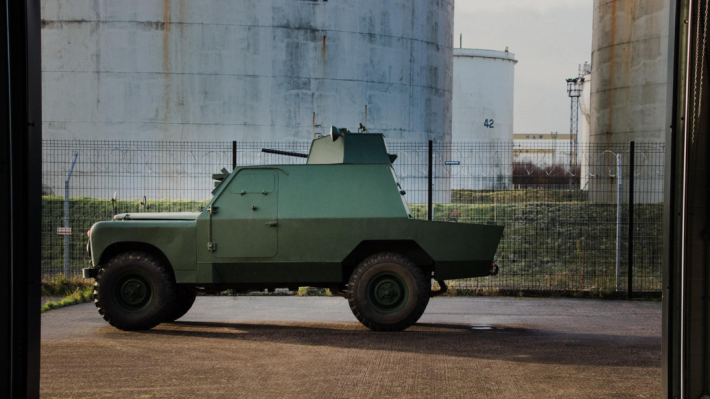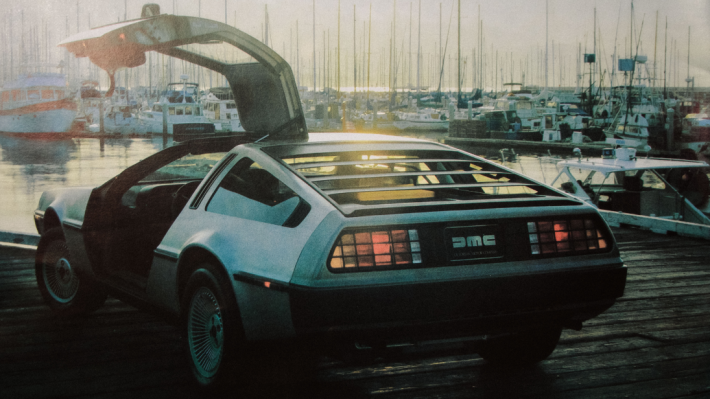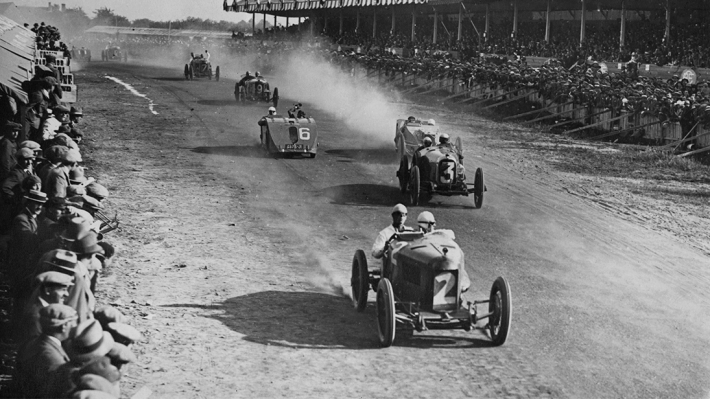
The Ford Mondeo
In the winter of 1993, a team of adventurers set off in a Ford Mondeo with one goal: to make the first overland journey from London to New York.
Explore the KeepsakesThe Overland Challenge
This marathon was the first attempt to drive from London to New York through Europe, across Asia, over the frozen sea ice of the Bering Strait to Alaska, through Canada, and finally across the United States, a distance of 15,800 miles.
A fleet of vehicles was used to attempt the journey, including vehicles sponsored by Ford, Russian trucks and a protoype amphibious vehicle.
One of the team was Belfast student Jenny McConnell (née Ballagh) who participated in the Challenge following her completion of the Duke of Edinburgh Gold Award. At 21, she was the youngest member of the team.

The Challenge was almost wholly successful, but due to the unseasonably mild weather, the ice was not firm in the 56 mile wide strait between Siberia and Alaska. This resulted in the cars and the team being air lifted to shore as they got closer to United States territory. Some of the team remained to attempt the crossing in a prototype vehicle called the Arktos, but the melting ice proved impassable.

Despite this setback, the cars did finish in New York at the United Nations building over four months later on the 5 April. Their struggles on the Bering Strait underlined some of the main reasons for the challenges: to highlight some of the unseen environmental problems of the world and encourage international co-operation.

Innovation
In many ways the Overland Challenge was innovative and marked breakthroughs in several areas.
The 1990s saw the end of the Cold War, a period of political tension between the United States and the Soviet Union (USSR) lasting over forty years. As a more progressive relationship with the West developed, the USSR became more open, allowing this Western and Eastern expedition team to travel through the country. The team would end up driving across the vast and treacherous Russian continent in temperatures falling as low as -59°C.

The Overland Team were also the first to travel through an incomplete Channel Tunnel, driving through the service tunnel at the beginning of the journey.
The Challenge was filmed as a documentary for ITV shown in weekly instalments. As this took place before the internet and digital formats became common place, the TV crew were required to send the physical film reels from their remote location to the studios back in England. This was a new and innovative approach to TV programming, allowing viewers to keep up-to-date with the progress of the team.

The L1 Ford Mondeo
This car is one of two special work Fords which participated in the Overland Challenge 1994.

The car is a prototype four-wheel drive version of the standard Ford Mondeo having both traction control and anti-lock brakes. It was built to the standard Ford specifications for vehicles sold in Sweden where winter temperatures and road conditions in the north of the country would have been comparable with those likely to be encountered in Russia. It was powered by a two litre fuel injection engine.

To cope with temperatures of -40°C, fuel and brake lines were routed inside the vehicles to prevent freezing. Ground clearance was raised and protective under shielding fitting to cope with the rutted roads of Siberia. It was the lead car in the expedition, hence the L1 on its registration plate.

The Keepsakes
The Overland Challenge ended at the United Nations Headquarters in New York. 1995 was the 50th anniversary of the signing of the United Nations Charter. The theme of the celebration was "We the peoples of the United Nations...United for a Better World". As part of these celebrations, the UN supported the Overland Challenge, and welcomed the team upon their arrival.
Across the journey, the team met people from the villages, towns and cities that they passed through. Many presented the team with souvenirs and handmade gifts to commemorate the occasion.



